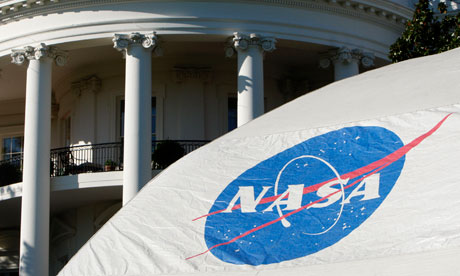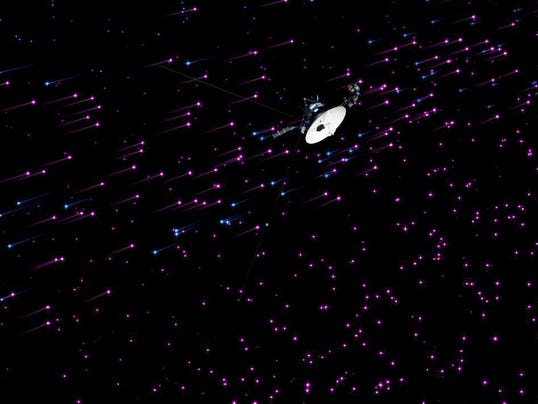 An exotic young planet free-floating through the Milky Way galaxy rather than orbiting any star is practically a newborn in cosmic terms, astronomers say.
An exotic young planet free-floating through the Milky Way galaxy rather than orbiting any star is practically a newborn in cosmic terms, astronomers say.
Dubbed PSO J318.5-22, the planet without a host star is 80 light-years away from Earth and has a mass only six times that of Jupiter. It formed a mere 12 million years ago, researchers said -- a newborn in planet lifetimes.
Lonely planet without a star discovered wandering our galaxy
Scientists who took chemistry into cyberspace win Nobel Prize
 Three U.S. scientists won the Nobel chemistry prize on Wednesday for pioneering work on computer programs that simulate complex chemical processes and have revolutionized research in areas from drugs to solar energy.
Three U.S. scientists won the Nobel chemistry prize on Wednesday for pioneering work on computer programs that simulate complex chemical processes and have revolutionized research in areas from drugs to solar energy.
The Royal Swedish Academy of Sciences, awarding the prize of 8 million crowns ($1.25 million) to Martin Karplus, Michael Levitt and Arieh Warshel, said their work had effectively taken chemistry into cyberspace. Long gone were the days of modeling reactions using plastic balls and sticks.
New shape-shifting metals discovered
 A new shape-changing metal crystal is reported in the journal Nature, by scientists at University of Minnesota. It is the prototype of a new family of smart materials that could be used in applications ranging from space vehicles to electronics to jet engines.
A new shape-changing metal crystal is reported in the journal Nature, by scientists at University of Minnesota. It is the prototype of a new family of smart materials that could be used in applications ranging from space vehicles to electronics to jet engines.
Called a "martensite", the crystal has two different arrangements of atoms, switching seamlessly between them. It can change shape tens of thousands of times when heated and cooled without degrading, unlike existing technology.
US scientists boycott Nasa conference over China ban
 Nasa is facing an extraordinary backlash from US researchers after it emerged that the space agency has banned Chinese scientists, including those working at US institutions, from a conference on grounds of national security.
Nasa is facing an extraordinary backlash from US researchers after it emerged that the space agency has banned Chinese scientists, including those working at US institutions, from a conference on grounds of national security.
Nasa officials rejected applications from Chinese nationals who hoped to attend the meeting at the agency's Ames research centre in California next month citing a law, passed in March, which prohibits anyone from China setting foot in a Nasa building.
Voyager enters realm between the stars, report says
 We've made it to the stars, at last.
We've made it to the stars, at last.
For the first time, a human-made object has left the sun's realm behind and ventured into the vast space between the stars, scientists announced Thursday. The record-setting spacecraft is NASA's scrappy Voyager 1, which launched in 1977 and edged into interstellar space on Aug. 25, 2012, according to recent data.
"We are in a new region of space where nothing has been before," says Voyager project scientist Ed Stone of Caltech.
Scenario sees Alaska quake causing $10 billion in damage in California
An earthquake in Alaska, if large enough, could spawn a tsunami that could cause at least $10 billion in damage along California's coastline, scientists say.
Experts at the U.S. Geological Survey, in a paper released Wednesday, say a "hypothetical but plausible" magnitude 9.1 quake could create waves as high as 24 feet that could smash into California's coastal regions with little warning, just hours for most locations.
Scientists: U.S. no longer the global leader in research
 An overwhelming majority of U.S. scientists in all fields say the country is no longer the global leader in scientific research, a non-profit group says.
An overwhelming majority of U.S. scientists in all fields say the country is no longer the global leader in scientific research, a non-profit group says.
The American Society for Biochemistry and Molecular Biology's report on government-funded scientific research, titled "Unlimited Potential, Vanishing Opportunity," detailed the findings of a survey of more than 3,700 frontline scientists from all 50 states, Puerto Rico and the District of Columbia.
More Articles...
Page 23 of 61

 Science Glance
Science Glance






























